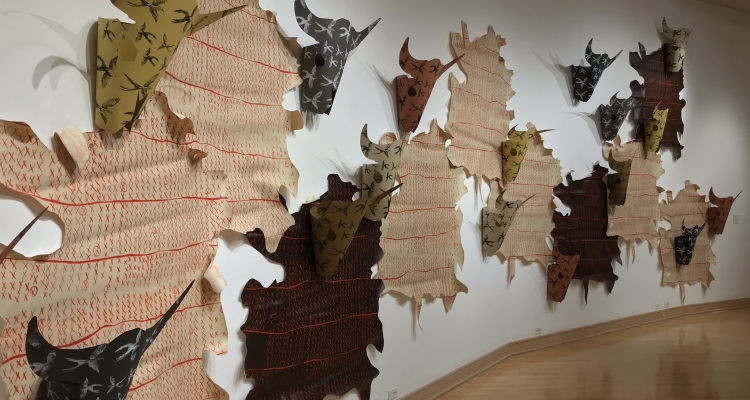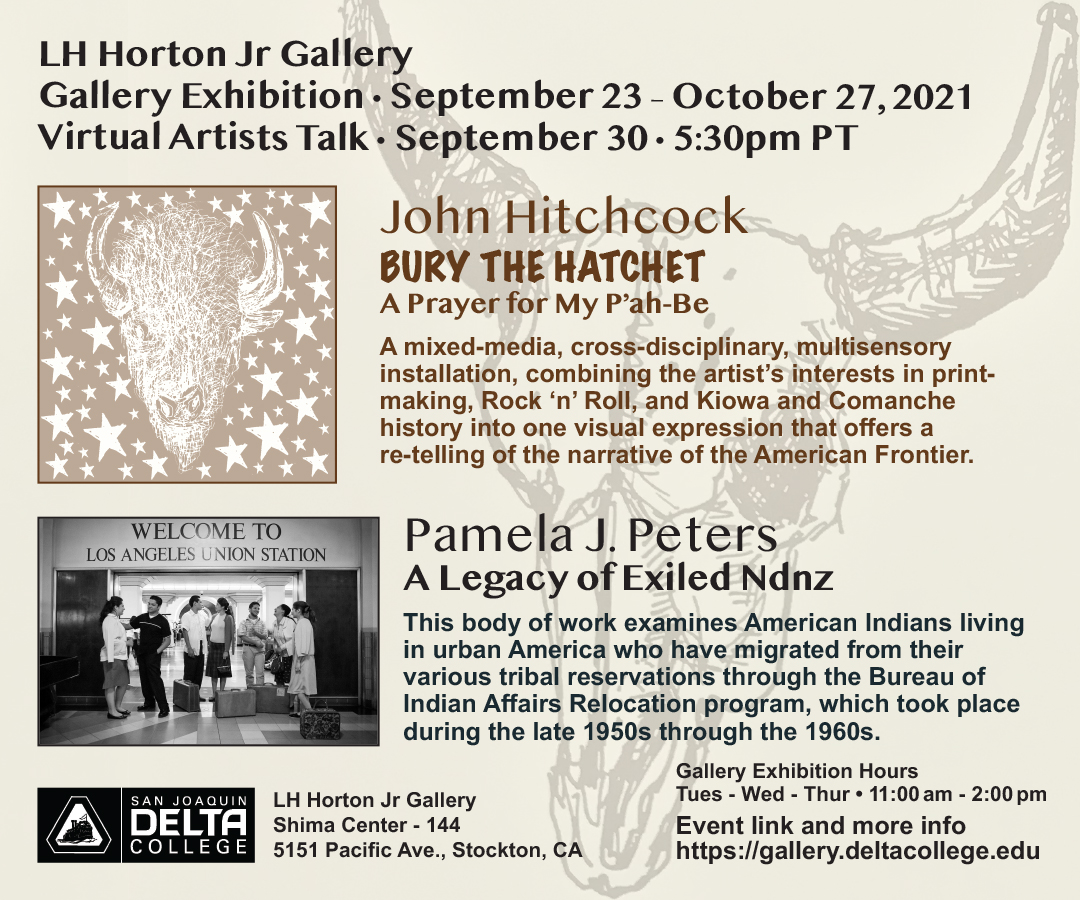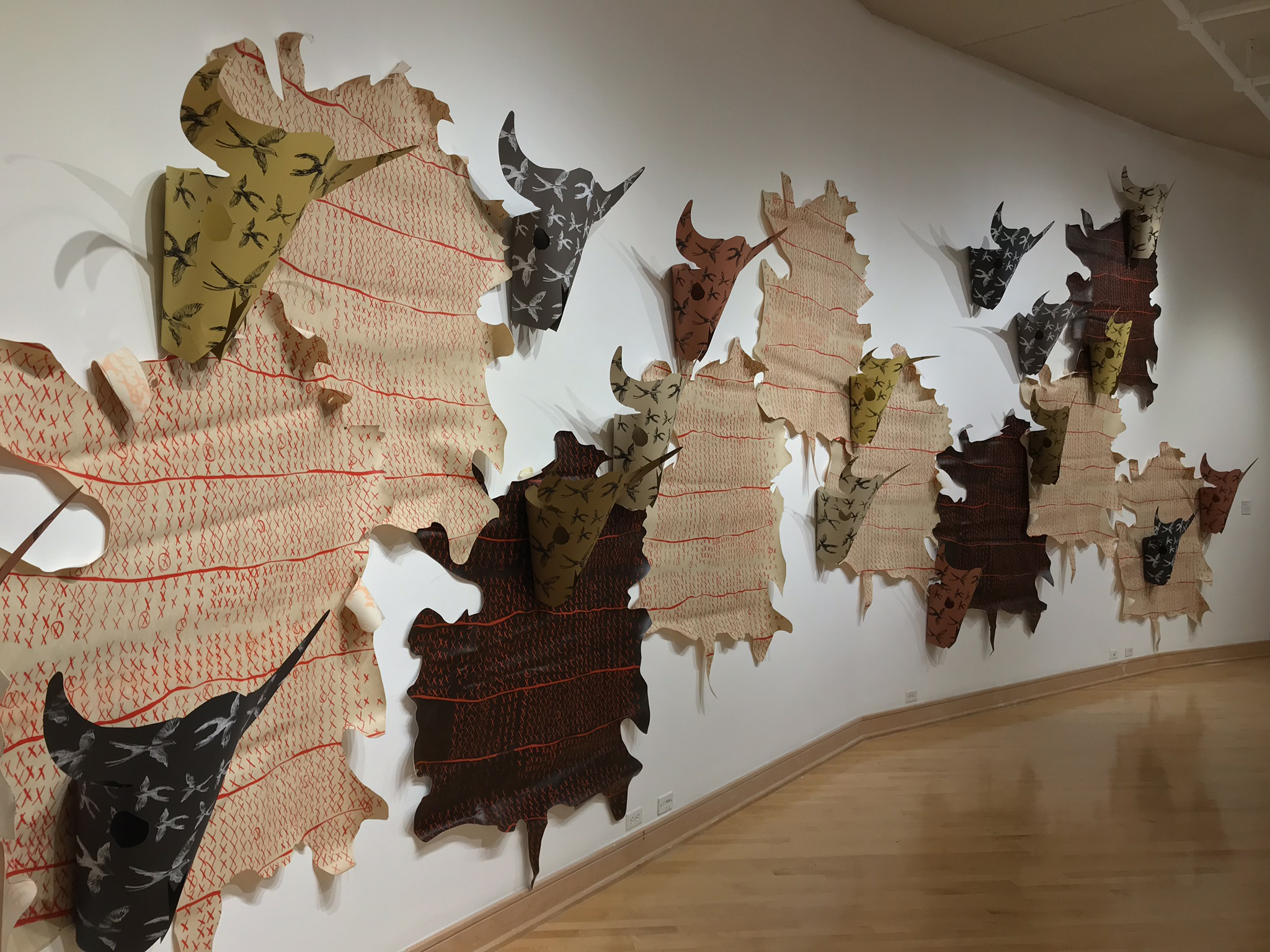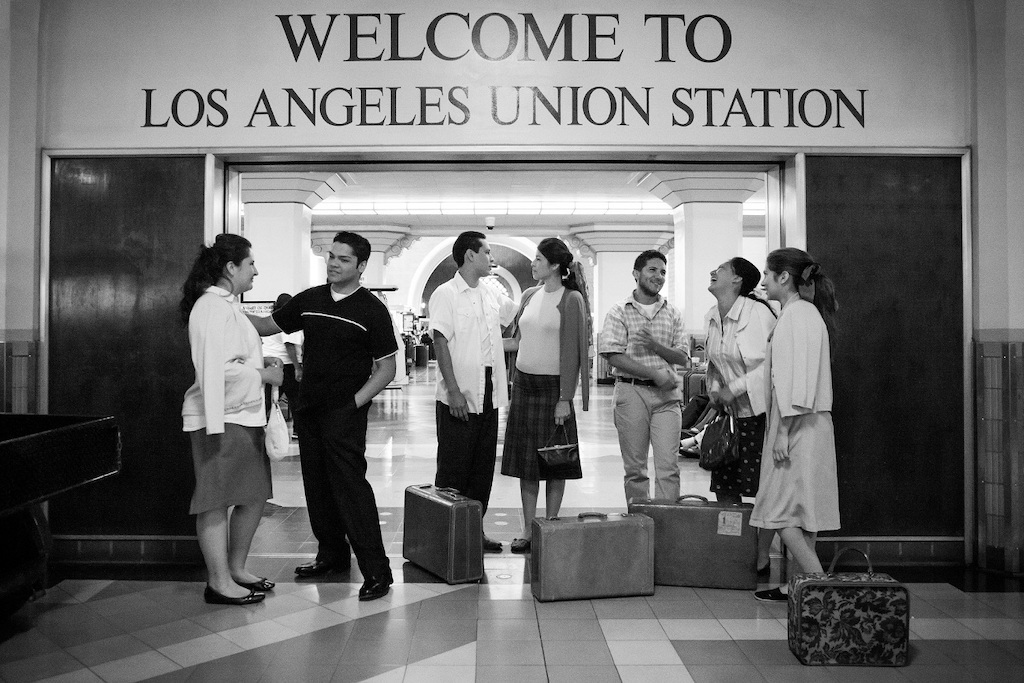
STOCKTON – In its first on-campus art exhibitions after being closed for 18 months, the LH Horton Jr Gallery at Delta College presents two distinct exhibitions shedding light on the native peoples of the American West.
John Hitchcock’s multimedia installation, "Bury the Hatchet: A Prayer for My P’ah-Be," and Pamela J. Peters’ photography series and short film, "A Legacy of Exiled Ndnz," will be featured in the Gallery from Sept. 23-Oct. 27. The Gallery will be open Tuesdays, Wednesdays and Thursdays from 11 a.m. to 2 p.m. and by appointment for individuals and class tours.
The public is also invited to join Hitchcock and Peters on Sept. 30 for a virtual discussion on their connection as artists working to present American history through the arts and the lens of their Native heritage. A link to attend the virtual Artists Talk, along with an online view of the artists’ work, will be available at the Gallery’s website on Sept. 23rd: gallery.deltacollege.edu
Masks are required indoors at Delta College, regardless of vaccination status.

"Bury the Hatchet: A Prayer for My P’ah-Be" is artist John Hitchcock’s mixed-media, cross-disciplinary, multisensory installation. Hitchcock combines his interests in printmaking, rock and roll music, and Kiowa and Comanche history into one visual expression that offers a re-telling of the narrative of the American Frontier.
Working from the theme of the Buffalo Bill Wild West Show, "Bury the Hatchet" explores issues of assimilation, acculturation, and indoctrination through oral history and music. "Bury the Hatchet" develops a shared language to interrogate historic and modern institutions to prompt a redefinition and reimagining of our present reality.
The visual and sound recordings in the exhibition work together to challenge western perspectives of the supremacy of the written word by reinforcing indigenous views of oral history passed on from generation to generation through storytelling.
Sound recordings include the artist on pedal steel guitar with soundscapes of cello, clarinet, accordion, and guitars by the band “The Stolen Sea.” In addition, Jason Cutnose (Kiowa,1967-2015) narrates a story about the Cutthroat Gap massacre in the Wichita Mountains of Oklahoma, Juanita Pahdopony (Comanche) records a Comanche prayer, Hitchcock’s grandfather Saukwaukee John Dussome Reid (Kiowa, 1912-1996) tells a story of the old days on the Southern Plains, and soprano Catlin Mead sings an operatic reinterpretation of Cutnose’s stories.

"The Protectors" by John Hitchcock
Finally, Intertribal War Dance Songs, recorded in 1978 on the Johnny Reid (Kiowa) and Peggy Reid (Comanche) Dance Ground, make up the soundscape. The exhibition has an accompanying limited-edition 12-inch vinyl album, CD, and set of letterpress prints available at Sunday Night Records.
"Bury the Hatchet" was originally organized by the Missoula Art Museum and curated by John Calsbeek, associate curator, and Brandon Reintjes, senior curator.
***
Pamela J. Peters’ photography series and short film, "A Legacy of Exiled Ndnz," examines American Indians living in urban America, in this case, Los Angeles. Her project focuses on young adults (from various tribes: Navajo, Cherokee, Seminole, Barona Bands of Mission Indians and Lakota) who have migrated from their reservations in the course of their own lives or are the offspring of families that relocated from various tribal reservations through the Bureau of Indian Affairs’ (BIA) Relocation program, which took place during the late 1950s through the 1960s. This photo/film project showcases young adults of today paying “tribute” to the first generation of relocated (exiled) Indians.

"Welcome to Los Angeles -- Union Station" by Pamela J. Peters
"A Legacy of Exiled Ndnz" is influenced by The Exiles (1961), a film that was written, produced, and directed by Kent Mackenzie. Mackenzie was the only filmmaker at that time that documented “realistic” imagery of American Indian going through the U.S. government’s Relocation Program. Program proponents encouraged relocation of American Indians for the following reasons. First, they wanted to decrease subsidies given to Indians living on reservations, even though those subsidies were granted in exchange for lands ceded during treaty negotiations. Second, they wanted to deceitfully take land that had rich resources for the purpose of capital and community expansion. Thirdly, they wanted Indians to join the blue-collar workforce of urban expansion.
Peters’ vision for this project is to showcase indigenous neorealist aesthetics that arise from the stories of indigenous people and their understanding of how relocation history is part of California’s history, and to also change the negative and inaccurate views of American Indians. She also hopes that this project will help foster a better understanding of the differences, despite the cultural ties, that American Indian people have, and offer an accurate portrayal of how Indian life and tribal identity are still sustained, even in an urban city like Los Angeles.
— For further information and images contact jan.marlese@deltacollege.edu






